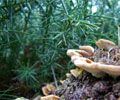Three Tips for Do-it-Yourself Mold Removers
A flooded home can leave you feeling frustrated and powerless. Add mold to the situation and it’s likely that you’re feeling sick. Take back some control by disinfecting your home by yourself. Follow these three tips to ensure that your do-it-yourself mold removal project will run smoothly and safely.
Prepare your home
If the wiring in your home has been affected by mold, you’ll want to turn off the main power. When you’re done disinfecting your home, enlist the help of a professional electrician to make sure it’s safe to turn the electricity on again.
Check for leaks in the water system before you spray your home down. Rent a hose that allows you to spray a soap and water solution together. Spray down every muddy item in your home from floor to ceiling.
If you haven’t spent time with heavy cleaning chemicals before, test yourself out by disinfecting a small area of your home to start. If the fumes affect you too much, hire a professional to disinfect the rest of your home.
Be thorough
Mold removal requires you to be as meticulous as possible. After the mud has been washed away, use cleaning pads or a stiff brush to scour each surface. You can use a commercial cleaner to scrub moldy surfaces after they’ve been sprayed, but any non-ammonia detergent will work just as well. Try a mixture of 1½ cups bleach with a gallon of water for a simple, homemade solution
Furniture, walls, floors, ceilings, and heating and cooling registers and ducts must all be disinfected with a solution that has a quaternary, pine-oil, or phenolic base. To be safe, get rid of a foot extra of drywall above the flooding level. Call in a professional to get any area that you aren’t able to reach on your own.
Dry each area for at least two days. If you don’t, the mold will return. Soft materials such as rags, clothes, paper and even heavily affected carpet will retain mold spores even after disinfecting and drying. Throw these items away in sealed bags.
Protect youself
When you’re ridding your home of mold, the cure can be as dangerous as the illness. To keep yourself safe from both mold and cleaning solution fumes, keep your home well ventilated throughout the cleaning. Take frequent breaks to get some fresh air.
Buy a mask or a particle remover respirator at a hardware store to protect you from mold spores released during the drying process. Because respirators don’t protect you from fumes coming from disinfectants such as bleach, spend as little time as possible around these chemicals.
Always wear gloves when you’re handling anything containing mold and dispose of the gloves when you are finished with your project.
When you’re finished doing all you can to disinfect your home, you may want to hire a licensed contractor to check your work. A professional can help you find any mold that you missed or assure you that your do-it-yourself mold removal project was a success.
